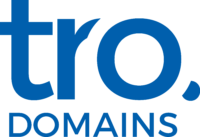Introduction to Website Builders
Website Builders are indispensable tools for creating a website without needing extensive technical expertise. These platforms come with user-friendly interfaces that often include drag-and-drop features, making the design process straightforward and intuitive. They allow users to customise the layout, colour schemes, and overall appearance of their website, providing a level of control that was once only available to those with coding skills.
For beginners, the choice of a Website Builder can be particularly impactful. The market offers a range of options, each with unique features and benefits. When selecting a website builder, consider factors such as ease of use, customisation capabilities, pricing structures, and customer support availability. Popular choices include Wix, Squarespace, and Weebly, each offering various templates and design options that cater to different needs and preferences.
One of the most appealing aspects of beginner-friendly Website Builders is the accessibility they offer. With a plethora of pre-designed templates available, users can select a base design that closely matches their vision and then tweak it to better fit their brand identity. This process not only saves time but also reduces the potential for design errors that could occur when starting from scratch.
Additionally, most Website Builders come with built-in features that enhance functionality. These can range from SEO tools that help improve your website’s visibility on search engines to integrated e-commerce capabilities for those looking to sell products online. For businesses, having these features readily available can make a significant difference in establishing an online presence that is both professional and effective.
Another key advantage is the ability to preview changes in real-time. This feature allows users to see how their adjustments will look on the live site before finalising them, making the design process more efficient and less prone to mistakes. It also provides the flexibility to experiment with different elements until the desired look is achieved.
For those concerned about ongoing support, many Website Builders offer comprehensive customer service, including tutorials, forums, and direct support channels. This support can be invaluable, particularly for those new to website creation, as it provides a safety net for resolving issues and answering questions that may arise during the design and maintenance phases.
While Website Builders offer a wide range of features and customisation options, they also simplify many complex processes. For example, hosting and domain registration are often included in the subscription package, eliminating the need to navigate these tasks separately. This integration further streamlines the process, allowing users to focus more on the creative aspects of building their website.
Overall, the use of a beginner-friendly Website Builder can significantly lower the barriers to entry for creating a professional online presence. These tools democratise website creation, making it accessible to a broader audience and enabling individuals and businesses to launch their sites with confidence and ease.
Choosing the Right Website Builder
Selecting the right Website Builder is essential for achieving your website’s desired outcome. Various factors should be taken into account when making your choice. The ease of use is paramount, especially for beginners. A user-friendly interface can significantly streamline the design process, making it less daunting and more enjoyable. Look for a platform that offers intuitive drag-and-drop functionality and clear navigation.
Customisation options are also vital. You’ll want a builder that allows you to tweak templates and layouts to suit your brand’s unique identity. While many website builders provide a range of pre-designed templates, the ability to modify these to fit your vision is crucial. Ensure that the platform you choose offers sufficient flexibility in terms of design elements like fonts, colours, and images.
Pricing is another important consideration. Website Builders are typically priced between $10 to $50 per month, often including web hosting and domain registration. Evaluate what is included in the subscription packages to ensure you’re getting value for money. Some platforms might offer advanced features like SEO tools, e-commerce capabilities, and marketing integrations at higher price tiers, so assess your needs carefully before committing.
Customer support is another key factor. The availability of comprehensive support channels can be a lifesaver, particularly for those new to website creation. Look for builders that provide multiple forms of assistance, such as tutorials, forums, and direct support options like live chat or email. This ensures that you have access to help whenever you encounter issues or have questions during the design and maintenance phases.
Reputation and market share can also give you insight into a website builder’s reliability and effectiveness. Squarespace holds the largest market share among the top 1 million websites, while Wix boasts the highest total market share. This information indicates these platforms are widely trusted and used by many. Wix, for instance, was the leading website builder in 2018, with over 22% of the worldwide market share. These statistics can provide some confidence in the platform’s performance and user satisfaction.
Mobile responsiveness is an increasingly important feature in today’s digital landscape. Ensure that the Website Builder you choose supports responsive design, allowing your site to function well across various devices, including smartphones and tablets. This enhances user experience and is crucial for maintaining professionalism.
Additionally, consider the availability of built-in features that can enhance your website’s functionality. Look for platforms that offer integrated SEO tools, e-commerce capabilities, and social media integration.
Setting Up Your Website
After selecting your preferred Website Builder, proceed by creating an account, which typically involves entering some basic details and selecting a domain name for your website. The domain name is crucial as it serves as your website’s address on the internet, so choose one that is both memorable and reflective of your brand.
Following account creation, you will need to dive into the initial settings to personalise your site. Begin by entering your website title and a brief description, which will help visitors understand the purpose of your site at a glance. The website title often appears in the browser tab and search engine results, so it’s worth spending some time crafting a meaningful and concise title.
Next, configure your basic layout and colour scheme preferences. Many beginner-friendly website builders provide an assortment of themes and templates that can serve as a starting point. Select one that closely aligns with your brand’s aesthetic, and then proceed to adjust the colours, fonts, and layout to suit your vision. Pay attention to details like header and footer styles, which contribute significantly to the overall look and feel of your website.
Once your basic settings are in place, it’s time to populate your site with essential pages. Common pages to start with include the homepage, about page, contact page, and any specific service or product pages you require. Most website builders offer predefined layouts for these pages, which you can further customise. Populate these pages with preliminary content such as text, images, and any other media that will engage your audience.
Don’t overlook the importance of navigation during this setup phase. A well-organised menu is critical for helping visitors find the information they’re looking for quickly and easily. Use clear, descriptive labels for each menu item and consider a drop-down menu if you have a large number of pages.
Another key aspect of setting up your website involves configuring SEO settings to improve your visibility on search engines. Many website builders include built-in SEO tools that guide you through optimising elements like meta titles, descriptions, and keywords. These settings can significantly impact how easily potential visitors can find your site.
Additionally, set up essential integrations that enhance your website’s functionality. Common integrations include linking to your social media accounts, setting up an email newsletter subscription form, and integrating Google Analytics for tracking visitor behaviour. These tools provide valuable insights and help you engage with your audience more effectively.
Lastly, consider the security settings offered by your Website Builder. Activate any available security features such as SSL certificates, which encrypt data transferred between your website and its visitors, ensuring a secure browsing experience. Implementing these measures during the setup phase can help protect your site from potential threats and establish trust with your visitors.
Designing Your Website Layout
Once your initial settings are configured, the next step is to focus on designing your website layout. Begin by choosing a template from your website builder’s collection that closely matches your vision. This template will serve as the foundation for your site, so select one that aligns with your brand’s aesthetic and functional requirements.
Customisation is key to making your website stand out. Most Website Builders offer extensive options for adjusting the layout, colours, fonts, and other design elements. Start by personalising the header and footer sections, as these areas frame the entire site and contribute significantly to its overall look and feel. For the header, consider incorporating your logo and a tagline to reinforce your brand identity. The footer can be used to display essential information such as contact details, social media links, and any legal disclaimers.
Focus on creating a clean and intuitive navigation menu. This element is crucial for user experience, as it helps visitors find the information they need quickly. Use clear, descriptive labels for each menu item and consider organising related pages under drop-down menus to keep the navigation bar uncluttered. The positioning of the menu should be consistent across all pages to maintain a cohesive look and feel.
Next, arrange the main content areas of your homepage. This page often serves as the first impression visitors will have of your site, so it should be engaging and informative. Use high-quality images and compelling text to capture your audience’s attention. Break up large blocks of text with visual elements such as images, videos, or infographics to make the content more digestible. Consider using sections like “Featured Products,” “Latest News,” or “Testimonials” to highlight key aspects of your business.
Responsive design is another critical aspect to consider. Ensure that your website builder supports mobile-friendly layouts that automatically adjust to different screen sizes. Test how your site looks and functions on various devices, including tablets and smartphones, to ensure a seamless user experience. This not only enhances usability but also contributes to your website’s professionalism and credibility.
Don’t forget to integrate interactive elements that can make your website more engaging. Features such as sliders, galleries, and pop-ups can add dynamic content to your site. However, use these elements sparingly to avoid overwhelming visitors and slowing down page load times.
Additionally, make use of whitespace effectively. Allowing sufficient space around text and images can make your site look more organised and easier to navigate. It also helps to draw attention to important elements, guiding visitors through your content naturally.
Consider the overall colour scheme of your site. Colours should be consistent with your brand identity and evoke the right emotions. Use contrasting colours for text and backgrounds to ensure readability. Accent colours can be used to draw attention to call-to-action buttons or important information.
Finally, preview your changes frequently to see how they affect the overall design. Most website builders allow you to see a real-time preview of your site, enabling you to make adjustments as needed. This iterative process helps you refine your design to achieve the desired professional appearance.
Adding Content and Features
With your layout in place, it’s now time to focus on populating your website with engaging content and essential features. Start by adding high-quality images that resonate with your brand’s identity. Visuals play a critical role in capturing visitors’ attention, so opt for images that are both appealing and relevant to your message. Avoid generic stock photos if possible; instead, use custom graphics or professional photography that aligns with your brand’s aesthetic.
The text content on your site is equally important. Ensure that your copy is clear, concise, and free of errors. Use a tone that reflects your brand’s voice, whether it be formal, friendly, or somewhere in between. Break up long blocks of text with headings, subheadings, and bullet points to make the content more digestible. Remember to incorporate keywords naturally to improve your site’s search engine optimisation (SEO) without making the text feel forced.
Integrating interactive features can significantly enhance user experience. Contact forms are essential for allowing visitors to reach out easily. Ensure these forms are straightforward and only request necessary information to avoid deterring potential contacts. Many website builders offer pre-designed contact form templates that you can customise to fit your needs.
Social media links are another vital feature. Adding icons that link to your social media profiles can help you build a more comprehensive online presence. Place these icons in prominent areas such as the header, footer, or a dedicated section of your homepage to encourage visitors to follow and engage with you on other platforms.
Blogs or news sections can be valuable additions to your site, offering a platform to share updates, insights, and industry news. Regularly updating this section not only keeps your content fresh but also helps improve your SEO rankings. Use this space to showcase your expertise and provide value to your audience, thereby establishing credibility and fostering trust.
For businesses, integrating e-commerce features can transform your site into a powerful sales tool. Many beginner-friendly website builders offer built-in e-commerce functionalities such as shopping carts, product catalogues, and secure payment gateways. Ensure that these features are easy to navigate and provide a seamless shopping experience for your customers.
Consider adding testimonials or case studies to showcase customer satisfaction and build trust. Real-world examples of how your product or service has benefited others can be incredibly persuasive. Place these testimonials strategically throughout your site, particularly on the homepage and product pages.
Lastly, don’t overlook the importance of incorporating SEO tools provided by your website builder. Utilise meta titles, descriptions, and alt text for images to improve your site’s visibility on search engines. Properly optimising these elements can significantly impact your website’s ability to attract organic traffic.
Testing and Launching Your Website
Before making your website live, a thorough testing phase is essential to ensure everything functions correctly and provides a seamless user experience. Start by navigating through every page of your site, clicking on all links, and using all interactive features like forms, buttons, and sliders. This helps identify any broken links or malfunctioning elements that could detract from the user experience.
Check for consistency in design and content across all pages. Ensure that fonts, colours, and layout elements remain uniform to maintain a cohesive look. Verify that all images load correctly and that text is free of errors. Attention to these details can significantly impact your website’s professionalism and user appeal.
Testing your site on multiple devices and browsers is also crucial. Mobile responsiveness is essential, so make sure your site displays correctly on smartphones, tablets, and different screen sizes. Use online tools to check browser compatibility, ensuring that your website works well on popular browsers such as Chrome, Firefox, Safari, and Edge.
Pay special attention to loading times. A slow website can frustrate visitors and lead to higher bounce rates. Utilise tools like Google PageSpeed Insights to assess your website’s loading speed and get recommendations for improvements. Optimising images and minimising the use of heavy scripts can help improve load times.
Another critical aspect of testing is functionality. Ensure that all forms, whether for contact, subscriptions, or orders, are working properly and that submissions are being received. Test any e-commerce functionalities, such as shopping carts and payment gateways, to ensure they process transactions smoothly and securely.
Security checks are equally important. Verify that your SSL certificate is correctly installed, providing a secure connection for your users. This is particularly crucial for websites handling sensitive information, such as personal details or payment information.
Conduct an SEO audit to ensure your site is optimised for search engines. Check that meta titles, descriptions, and alt texts are in place and correctly formatted. This will help improve your site’s visibility and attract more organic traffic.
After completing these tests and making any necessary adjustments, consider running a final check with a small group of users. Gathering feedback from real users can provide valuable insights into any remaining issues or improvements that may have been overlooked.
Finally, double-check your website’s backup and recovery options. Ensure you have a recent backup of your site and that you know how to restore it in case anything goes wrong post-launch. Regular backups are a best practice for maintaining your site’s integrity and security.
Maintaining Your Website
Maintaining your website is crucial for ensuring its ongoing success and functionality. Regular updates are essential to keep your content current and engaging. This includes posting new blog entries, updating product listings, and refreshing images and other media to reflect any changes in your business or industry trends.
Monitoring your website’s performance is another key aspect of maintenance. Use analytics tools to track visitor behaviour, page views, and conversion rates. This data can provide valuable insights into what is working well and what might need improvement. For instance, if certain pages have high bounce rates, it might indicate that the content needs to be more engaging or that the page design could be more user-friendly.
Security is a top priority. Ensure that your website’s software, including any plugins or extensions, is always up to date. This helps protect your site from vulnerabilities and cyber threats. Implementing security measures such as strong passwords, regular scans for malware, and enabling HTTPS can further safeguard your website. Regular backups are also essential. Schedule automated backups to ensure that you have a recent copy of your website in case of data loss or corruption. This allows you to quickly restore your site to its previous state with minimal downtime.
Engage with your audience by responding to comments and enquiries promptly. This not only builds trust but also encourages repeat visits and customer loyalty. Utilise feedback from your visitors to make continuous improvements to your site. Address any usability issues and consider adding new features that enhance the user experience.
Check for broken links periodically. These can frustrate users and harm your search engine rankings. Use online tools to identify and fix any broken links to maintain a seamless browsing experience.
Lastly, evaluate your SEO strategy regularly. Ensure that your meta titles, descriptions, and keywords are still relevant and optimised for search engines. Keeping up with the latest SEO trends and algorithm changes can help maintain or improve your site’s visibility.
By dedicating time to these maintenance tasks, you can ensure that your website remains a valuable asset to your business, providing a reliable and engaging platform for your audience.



